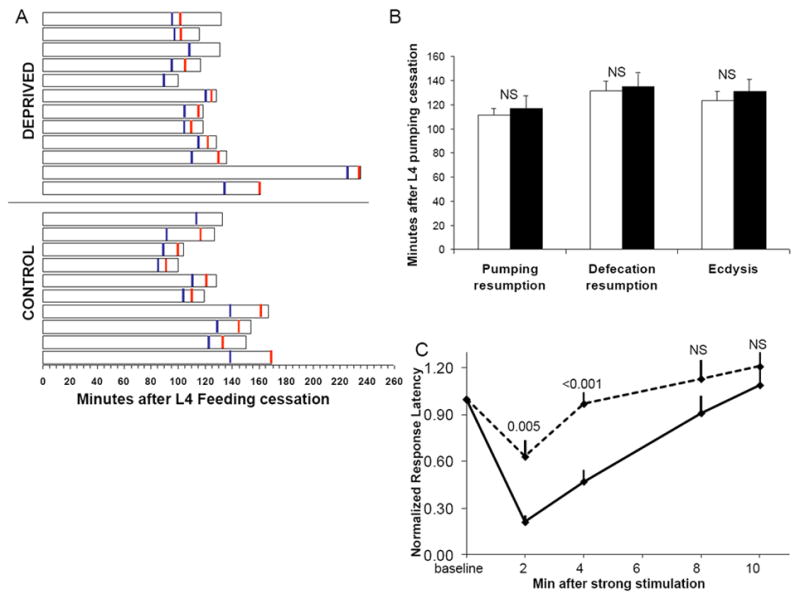Figure 3.

Deprivation of early L4 lethargus quiescence does not delay the timing of lethargus end points but does affect subsequent sleep quality. (A) Duration from onset of pumping cessation to ecdysis of individual worms. Blue vertical lines denote resumption of pharyngeal pumping and red vertical lines denote resumption of defecation movements. (B) Mean durations of the data presented in A. Filled bars denote deprived animals. NS denotes not significant p>0.1 (two-tailed Student’s T test). Two worms, which did not recover from the deprivation and were therefore censored (Table S2), were observed to resume body movements but not pharyngeal pumping or defecation movements and remained trapped in their prior stage cuticle. (C) Wild-type worms have shortened 1-octanol response latencies following strong stimulation during lethargus but then return to baseline elevated response latencies over 10 minutes. In contrast, worms that had been stimulated for 30 minutes during lethargus (dotted line, Protocol 2) show an accelerated return to baseline response latencies after a strong stimulus. P values shown at each time point were calculated with a two-tailed Student’s t test. N=10 worms. Error bars denote SEM. NS denotes p>0.05.
